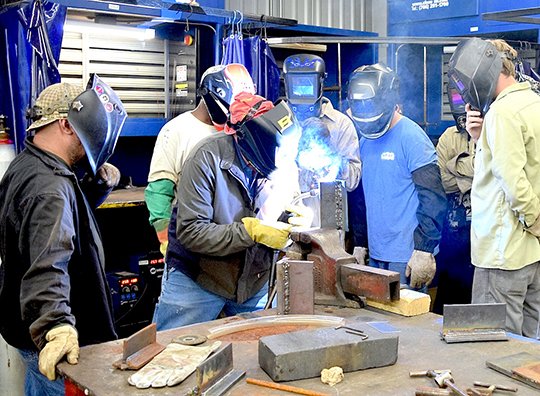Welding is a critical skill in many industries, including construction, manufacturing, and repair. It involves using heat and pressure to combine metal pieces, creating a strong and durable bond.
Welding training San Diego is essential for those who want to become professional welders or improve their welding skills. This guide will cover the types of welding training available, the equipment and safety gear needed, and tips for finding the right training program.
We will also discuss different welding techniques, welding certifications, and the career opportunities available in the welding field.
Types of Welding Training
Several types of Welding training in San Diego are available, including classroom instruction, on-the-job training, and apprenticeships. Classroom instruction typically takes place at vocational schools or community colleges and covers the theory and principles of welding.
On-the-job training allows individuals to learn to weld while working for a company, while apprenticeships combine classroom instruction with on-the-job training. Each type of training has its benefits, and it’s important to research and choose the one that best fits your needs.
Classroom instruction can provide students with a comprehensive understanding of welding, including the types of welding processes, safety procedures, and welding techniques.
These classes are usually taught by experienced welders and provide students with hands-on training through projects and exercises.
On-the-job training, or OJT, is another popular option for those who want to learn to weld. OJT allows individuals to learn to weld while working for a company and can be a great way to gain hands-on experience.
OJT is often more flexible than classroom instruction and allows individuals to learn at their own pace.
Apprenticeships are a great option for those who want to learn to weld while earning a paycheck. Apprenticeships combine classroom instruction with on-the-job training and provide individuals with a comprehensive understanding of welding.
Apprenticeships usually last for several years and provide individuals with the skills and experience they need to become professional welders.
There are several types of welding training available, including:
- Apprenticeship programs: Apprenticeship Welding training San Diego programs provide on-the-job training and classroom instruction, allowing welders to learn the trade while earning a paycheck.
- Vocational schools: offer welding programs that provide classroom instruction and hands-on training.
- Community colleges: Community colleges offer welding programs that provide classroom instruction, hands-on training, and the opportunity to earn a degree or certificate.
Quipment and Safety Gear
Proper equipment and safety gear are essential for safe and successful welding training. Welding requires various tools and equipment, including a welder, welding helmet, gloves, and safety glasses.
It’s important to have the right equipment and to use it properly to avoid accidents and injuries. Additionally, welding produces harmful fumes and gases, so proper ventilation and respiratory protections are necessary.
Welders use various tools and equipment, including welding machines, torches, and electrodes. Welding machines can be powered by electricity, gas, or both and come in various sizes and styles.
Welding torches are used to heat and melt the metal, while welding electrodes are used to create the weld. Welders also need protective gear, including welding helmets, gloves, and safety glasses, to protect themselves from the heat, sparks, and fumes produced by welding.
Proper ventilation is also important when welding to remove harmful fumes and gases. Welding can produce a variety of harmful gases, including carbon monoxide, nitrogen oxides, and ozone.
These gases can be dangerous to inhale, and proper ventilation is necessary to remove them from the air. Welders should also use respiratory protection, such as respirators or air-purifying hoods, to protect themselves from inhaling harmful gases.
Benefits of Welding Training
- Safety: Welding training teaches welders the proper techniques and safety measures to prevent accidents and injuries.
- Improved skills: Welding training in San Diego improves the welding skills and knowledge of the welder, which leads to better quality and efficiency in their work.
- Career advancement: Welding training can lead to better job opportunities and higher pay for welders.
- Certification: Welding training can also lead to certification, benefiting those seeking employment or advancement in the welding field.
Conclusion
Welding is a highly skilled profession that requires proper training, equipment, and safety gear. By understanding the types of welding training available, the equipment and safety gear needed, and tips for finding the right training program, you will be well on your way to becoming a skilled welder.
Also Read:
Examining the Various Types of Welding Inspection







Comments